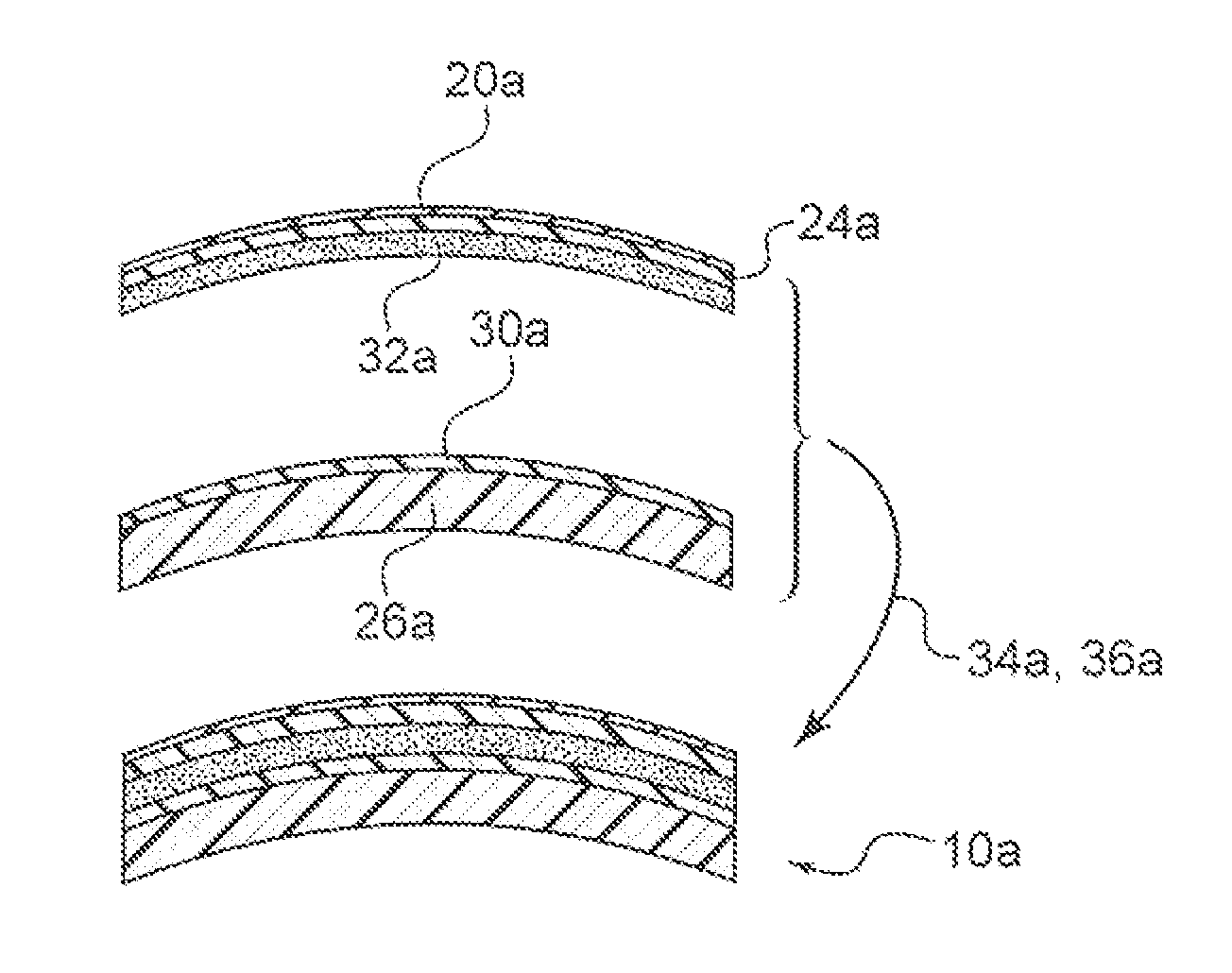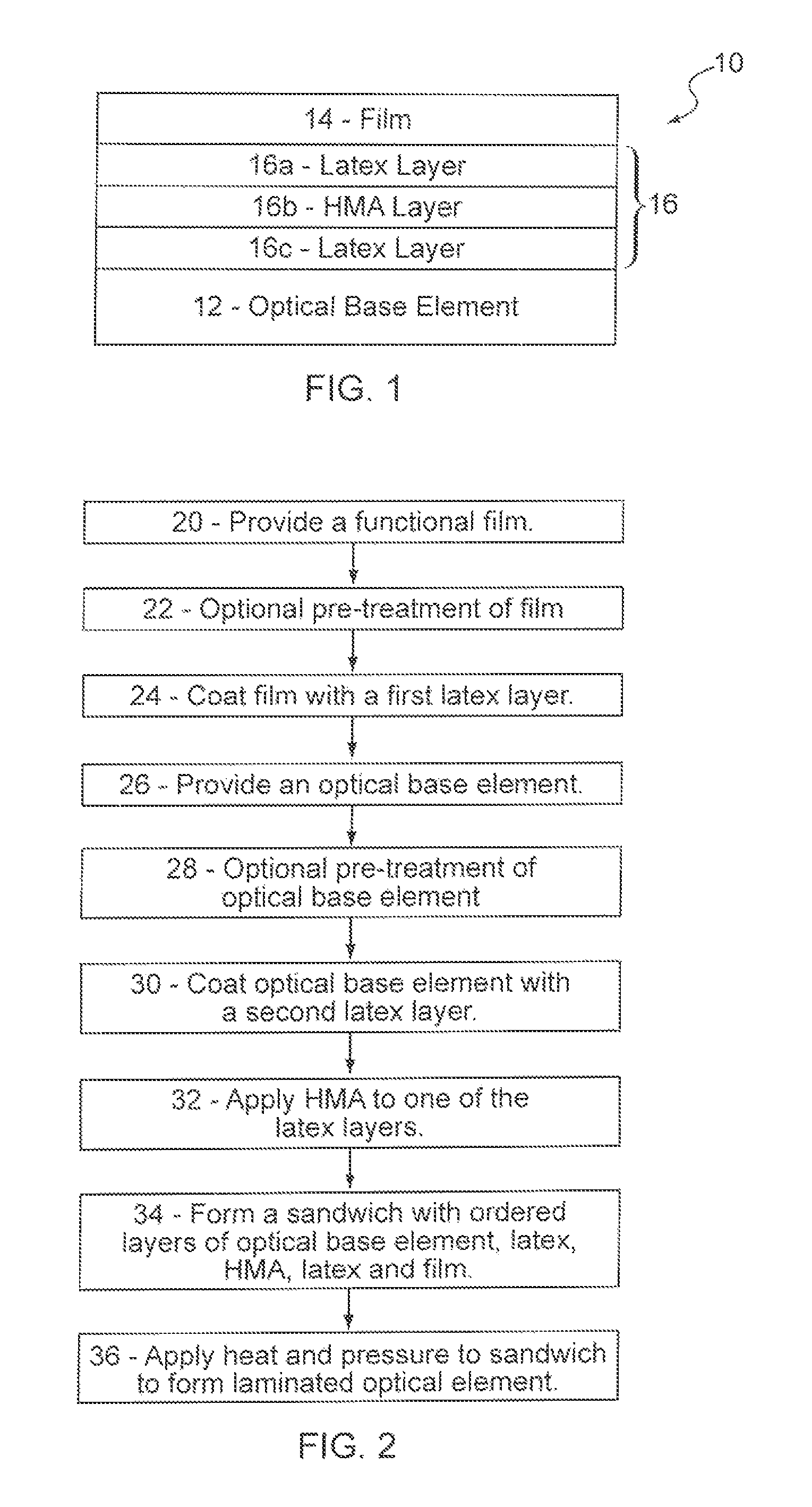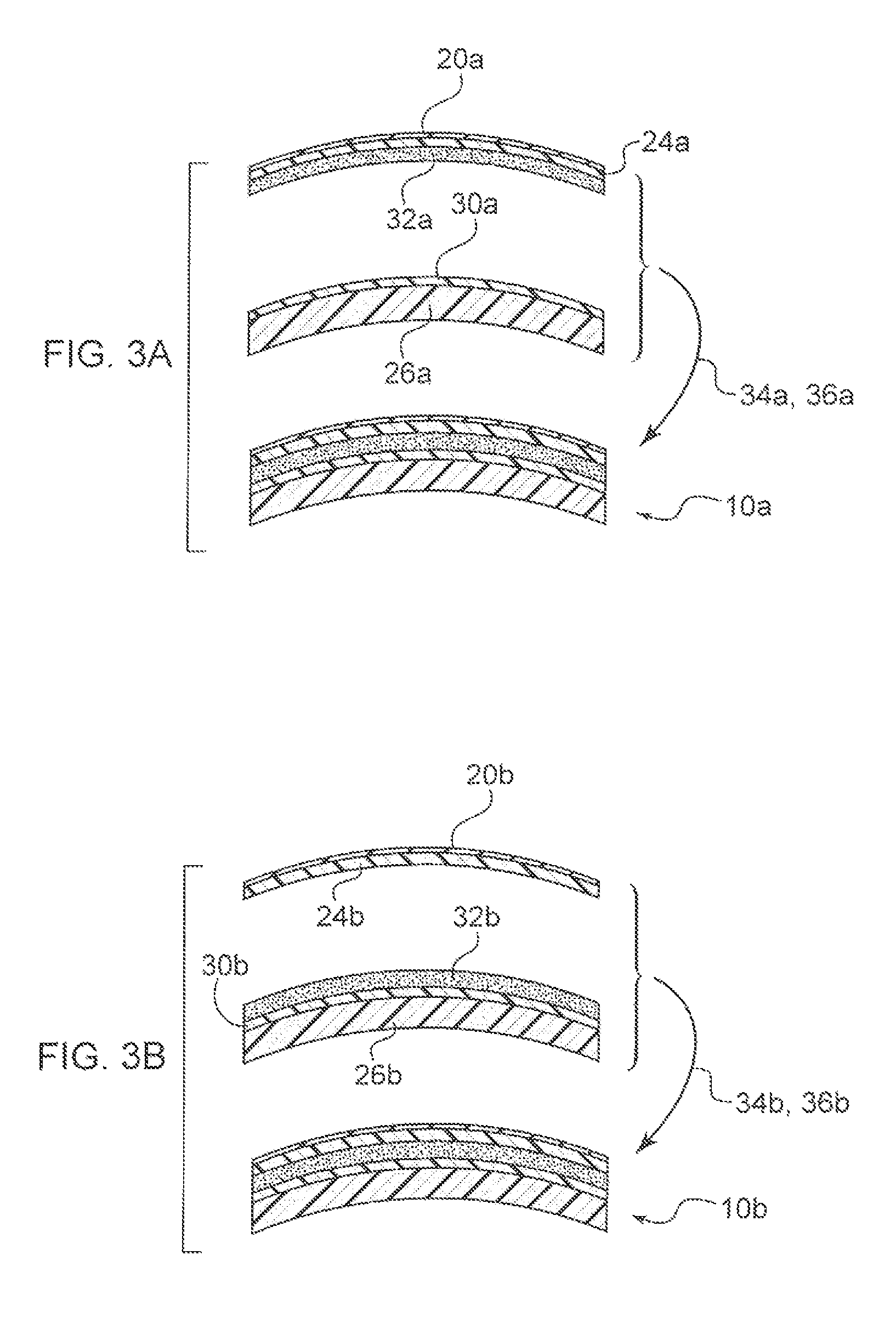Adhesive system for a laminated lens and method for applying same
a laminated ophthalmic lens and adhesive system technology, applied in the field of adhesive system for laminated ophthalmic lenses, can solve the problems of cosmetic defects, unfavorable use, unfavorable use, etc., and achieve the effects of good adhesive bonding, good adhesive bonding to lens, and easy spin coating
- Summary
- Abstract
- Description
- Claims
- Application Information
AI Technical Summary
Benefits of technology
Problems solved by technology
Method used
Image
Examples
example 1
[0040]A TAC polarized film was first thermoformed to a curve close to the front side of an epi-sulfur lens material with an index of 1.74. The convex side (front side) of the TAC polar film was washed with a caustic solution (10% NaOH) followed by DI water rinse, and then a latex based on W-234 material was spun on the film. After the latex layer dried, a HMA solution of UD104 from Bond Polymer Inc, was spun on top of the latex and set to dry for 2 minutes at 60° C. A third layer of the same first latex was applied onto the convex side (front side) of the 1.74 lens under the same condition as the latex on the film, including a caustic wash and water rinse.
[0041]Finally, the dried double adhesive layer coated film was then laminated to a latex coated 1.74 epi-sulfur lens with a small hot press accumulator device having a lens support and an inflatable silicon membrane. The convex side of the film, covered with the HAM-latex adhesive layer was put in contact with the convex side of th...
examples 2-4
[0043]Example 1 was repeated except the 1.74 lens was pre-treated by chemical treatment and one other treatment selected from corona, plasma and UV before latex applied onto it. The obtained lens had a much stronger peel force between the film and the lens as shown in Table 1A.
example 5
[0044]Example 2 was repeated except a UD 108 HMA was used instead of UD104. The obtained lens had acceptable peel force between the film and the lens as shown in Table 1A.
PUM
| Property | Measurement | Unit |
|---|---|---|
| thickness | aaaaa | aaaaa |
| thickness | aaaaa | aaaaa |
| thickness | aaaaa | aaaaa |
Abstract
Description
Claims
Application Information
 Login to View More
Login to View More - R&D
- Intellectual Property
- Life Sciences
- Materials
- Tech Scout
- Unparalleled Data Quality
- Higher Quality Content
- 60% Fewer Hallucinations
Browse by: Latest US Patents, China's latest patents, Technical Efficacy Thesaurus, Application Domain, Technology Topic, Popular Technical Reports.
© 2025 PatSnap. All rights reserved.Legal|Privacy policy|Modern Slavery Act Transparency Statement|Sitemap|About US| Contact US: help@patsnap.com



